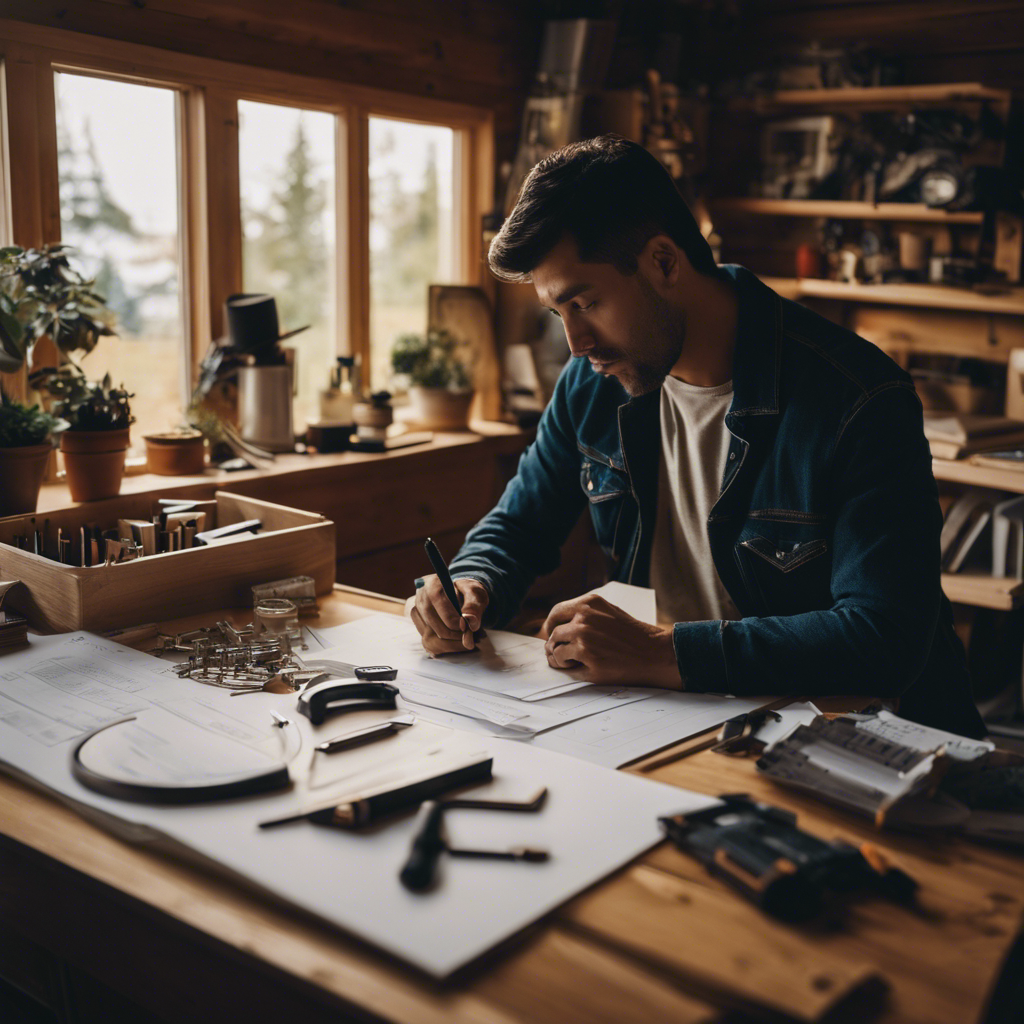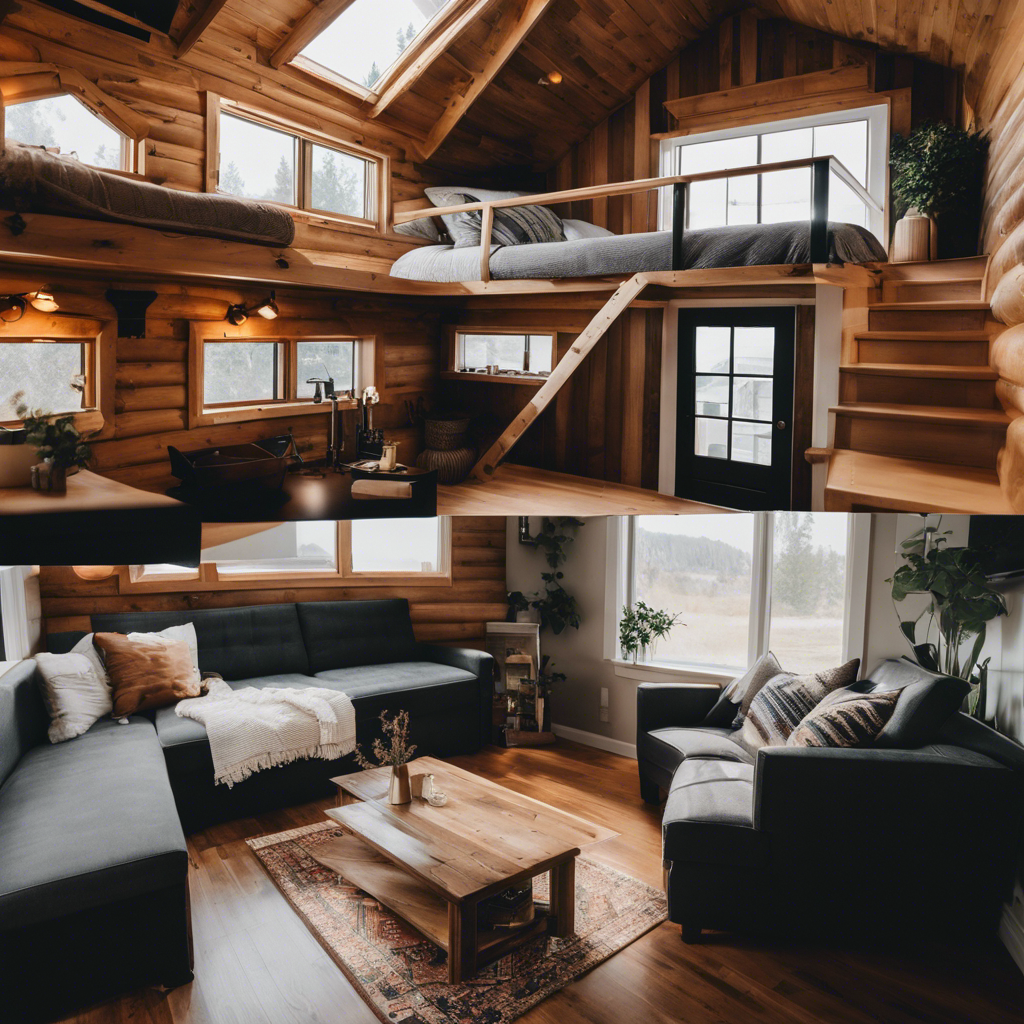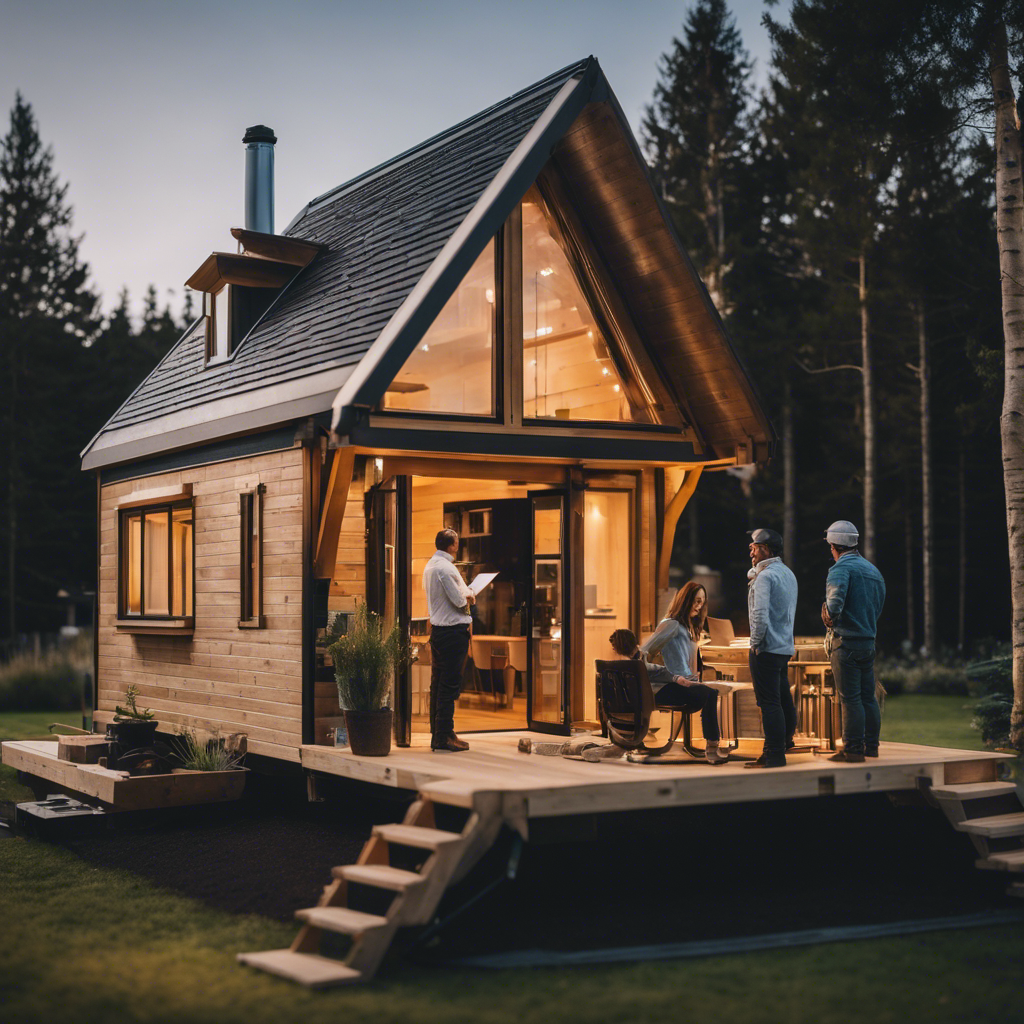As someone who’s always been fascinated by the idea of living in a tiny house, I found myself faced with a dilemma: should I build it myself or hire a professional?
The financial considerations were clear – building it myself would save money, but require a lot of time and effort. On the other hand, buying from a builder would cost more, but save time and ensure quality.
In this article, I’ll explore the pros and cons of both options, helping you make the best decision for your tiny house journey.
Financial Considerations

When considering the financial aspects of building a tiny house, I need to evaluate whether I value saving money or saving time. There are pros and cons to both options.
Building a tiny house myself will definitely save me money, but it will require a significant amount of time and effort.
On the other hand, buying a tiny house from a builder will cost more money upfront, but it will save me time and potentially provide a higher quality finished product.
Budget considerations are important in making this decision. I need to carefully evaluate my financial situation and determine how much I’m willing and able to spend on building or buying a tiny house.
It’s crucial to weigh the financial pros and cons before making a final decision.
DIY Vs Hiring a Builder

Personally, I believe that DIY is a viable option for building a tiny house, but hiring a builder can provide a higher level of expertise and efficiency. When considering DIY, there are pros and cons to weigh.
On the positive side, building your own tiny house allows for customization and a deeper understanding of the home’s systems. However, it requires a significant time commitment and the possibility of making costly mistakes.
On the other hand, hiring a builder can save you time and ensure a higher quality result, but it comes with a higher price tag. Conducting a cost analysis is crucial to determine which option aligns with your priorities and budget.
Ultimately, the decision between DIY and hiring a builder depends on your skills, resources, and personal preferences.
Time and Commitment

Since building a tiny house requires a significant amount of time and commitment, it’s important to carefully consider your availability and dedication to the project. When deciding to build a tiny house, you must manage your work-life balance and be prepared for the impact on your income. Here are some key points to consider:
-
Time Commitment:
-
Building a tiny house takes longer than expected, so make sure you have ample free time.
-
If you have a paying job, taking time off for construction may affect your income.
-
Evaluate your schedule and determine if you can dedicate enough time to the project.
-
Managing Work-Life Balance:
-
Building a tiny house can be time-consuming, so it’s vital to find a balance between work and construction.
-
Prioritize your commitments and plan your time effectively to avoid overwhelming yourself.
-
Consider how building a tiny house may impact your ability to fulfill work obligations.
-
Impact on Income:
-
Building a tiny house may require you to take time off work, which can affect your income.
-
Be prepared for potential financial adjustments and plan accordingly.
-
Evaluate the financial feasibility of building a tiny house and determine if it aligns with your income goals.
Managing work-life balance and considering the impact on income are crucial factors to weigh when deciding to build a tiny house. It’s essential to carefully evaluate your availability and dedication, ensuring that the project aligns with your personal and financial goals.
Personal Considerations

I carefully considered my personal motivations and decided that building my own tiny house would be the best option for me. One of the key factors that led me to this decision was the customization options that building my own tiny house would provide.
I wanted to have control over every aspect of my living space, from the layout to the materials used. Additionally, I researched the availability of tiny house options in my area and found that there were limited choices that truly fit my needs and preferences.
Expert Advice

Experts recommend considering the financial aspects, time commitment, and personal motivations before deciding. Building your own tiny house allows for customization and a deeper understanding, but it takes longer and mistakes are common. Hiring a builder is suitable if you lack the necessary skills, time, or motivation.
Prioritize safety and quality when making your decision.
-
Benefits of building yourself:
-
Cost less money but require a significant amount of time.
-
Allows for customization and a deeper understanding of the home’s systems.
-
Offers a rewarding and fulfilling experience.
-
Pros and cons of hiring a builder:
-
Costs more money but saves you time.
-
Provides professional expertise and guidance.
-
Offers fewer opportunities for customization during the construction process.
Headroom in Tiny Houses

When designing and building a tiny house, it’s important to consider headroom and find solutions to increase it for a more comfortable living space.
Limited headroom in sleeping lofts can make it uncomfortable to move around or sit up in bed, especially for taller individuals.
To address this issue, there are two possible solutions: expanding roof design and lowering loft design.
An expanding roof design allows for more space by designing the roof to expand upwards when needed, providing additional headroom.
On the other hand, a lowering loft design allows for more headroom by adjusting the loft as desired.
Both solutions have their advantages. Expanding roofs offer flexibility and can alleviate the issue of limited headroom, while lowering lofts provide a more comfortable sleeping space.
Ultimately, the choice depends on personal preferences and the feasibility of the design.
Expanding Roof Design

Designing the roof to expand upwards in a tiny house loft provides additional headroom and allows for more comfortable movement. This design consideration is crucial when it comes to maximizing the space in a tiny house.
Here are some key points to keep in mind when considering an expanding roof design:
-
Structural Implications:
-
Careful engineering and construction are necessary to ensure the stability and integrity of the roof expansion.
-
The materials used should be lightweight yet strong enough to support the expanded roof.
-
It’s important to consult with professionals to assess the structural feasibility of the design.
-
Design Considerations:
-
The expanding roof should be easy to operate and secure in its expanded position.
-
Weatherproofing and insulation should be incorporated into the design to maintain a comfortable living environment.
-
The aesthetics of the expanded roof should be pleasing and complementary to the overall design of the tiny house.
-
Benefits:
-
Additional headroom allows for more comfortable movement and enhances the overall livability of the tiny house.
-
The expanded roof provides a sense of spaciousness and freedom in the loft area.
-
It allows for customization and flexibility in accommodating the needs and preferences of the occupants.
Considering both the design considerations and structural implications is vital when incorporating an expanding roof design in a tiny house loft. This approach not only addresses the issue of limited headroom but also adds functionality and comfort to the living space.
Lowering Loft Design

I prefer a lowering loft design because it offers more headroom and creates a more comfortable sleeping space in a tiny house. By lowering the loft, I can ensure that I’ve enough space to move around and sit up in bed without feeling cramped. The structural feasibility of this design is crucial, as it needs to be safe and stable. It allows me to design the tiny house to fit my specific needs and requirements.
Customization options are also important, as everyone has different preferences when it comes to headroom. It’s essential to consider the structural implications and work with professionals to ensure that the lowering loft design is implemented correctly.
Professional Assistance

Seeking professional assistance in building a tiny house can provide the necessary guidance and expertise to ensure a successful and efficient construction process. Here are some pros and cons to consider when analyzing the cost of hiring a professional:
Pros:
- Access to expert knowledge and experience in tiny house construction.
- Professional builders can handle complex tasks, such as electrical work, with precision.
- They can provide valuable advice on design, materials, and building codes.
Cons:
- Hiring professionals can be more expensive compared to a DIY approach.
- Limited control over the construction process and customization options.
- Reliance on the builder’s schedule and availability.
Conducting a thorough cost analysis and weighing these pros and cons will help you make an informed decision about whether to hire a professional or tackle the project yourself. Remember, the key is to find the right balance between cost, expertise, and personal involvement.
Frequently Asked Questions
Are There Any Financial Incentives or Tax Benefits Associated With Building or Buying a Tiny House?
There are financial incentives and tax benefits associated with building or buying a tiny house. These incentives can include reduced property taxes, energy efficiency tax credits, and the potential for lower overall living expenses.
How Can I Ensure That the Materials Used in the Construction of a Tiny House Are Eco-Friendly and Sustainable?
To ensure eco-friendly and sustainable materials in my tiny house, I’ll research options like reclaimed wood and recycled insulation. Balancing sustainability and cost considerations, I’ll choose materials that align with my values and budget.
What Are Some Common Challenges or Obstacles That People Face When Building or Buying a Tiny House?
Common challenges and obstacles when building or buying a tiny house include financing options, sustainability concerns, and customization limitations. It’s important to carefully consider these factors before making a decision.
Are There Any Specific Zoning or Building Regulations That I Need to Be Aware of When Constructing or Placing a Tiny House?
Zoning regulations and building codes are crucial considerations when constructing or placing a tiny house. It’s important to research and comply with local laws to ensure a legal and safe living arrangement.
How Can I Determine the Resale Value of a Tiny House, and What Factors Should I Consider When Deciding to Sell or Move?
When determining the resale value of a tiny house, consider factors like location, size, condition, and market demand. When deciding to sell or move, consider factors like lifestyle changes, financial considerations, and personal preferences.
Conclusion
In the end, the tiny house dilemma boils down to a choice between the art of creation and the ease of convenience. It’s a dance between saving money and saving time, between self-reliance and relying on professionals.
Whichever path you choose, whether you wield a hammer or sign a contract, the journey to your dream tiny house is an adventure worth embarking on. So embrace the rhythm of decision-making and let your aspirations guide you towards the perfect home on a smaller scale.


